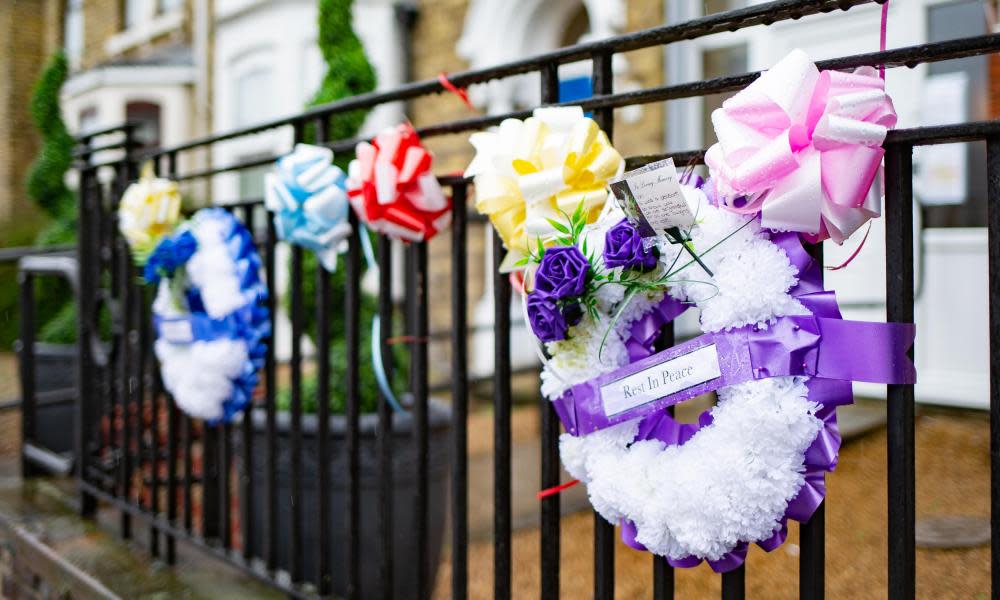More than 16,000 people in UK care homes have died from coronavirus

More than 16,000 people have died from Covid-19 in UK care homes, according to the latest official figures – almost a third of all fatalities.
The grim milestone was reached with the deaths of 564 residents in England and Wales in the week to 5 June, according to the Office for National Statistics’ analysis of death certificates.
The rate of deaths in care homes is falling as infections diminish following the lockdown, and the number of deaths above the five-year average in care homes fell to its lowest level since early April.
But care homes remain hard hit and operators are calling for financial help and fresh guarantees from ministers over testing and supplies of personal protective equipment to avert a similar impact in a widely expected second peak of infection.
(February 25, 2020)
Public Health England issues guidance stating that it was “very unlikely” care homes would become infected. The guidance was not withdrawn until 12 March.
(March 31, 2020)
Despite a lack of official statistics about fatalities, care homes warn that they are at “breaking point” and MHA, the country’s biggest charitable provider, says it has suspected cases in more than half of its facilities.
(April 2, 2020)
The Department of Health and Social are guidelines on discharging hospital patients into care homes states: “Negative tests are not required prior to transfers/admissions into the care home.”
(April 14, 2020)
Chief medical adviser Chris Whitty says that more than one in ten care homes (13.5%) now has at least one case of Covid-19. Whitty says: “Care homes are one of the areas where there are large numbers of vulnerable people and that is an area of risk and therefore we would very much like to have much more extensive testing.”
(April 15, 2020)
Testing is expanded into care homes but only for people with symptoms.
(April 21, 2020)
Five of the largest care home providers say they have now recorded a total of at least 1,052 deaths
(April 28, 2020)
Care home deaths are included alongside deaths in hospitals after a sharp rise of more than 4,300 deaths over a fortnight in England and Wales. Testing is extended to staff and residents without symptoms.
(May 3, 2020)
Launch of a national delivery system for personal protective equipment to care homes is hit by a delay of up to three weeks
(May 13, 2020)
Academics report that more than 22,000 care home residents in England and Wales may have died as a direct or indirect result of Covid-19 – more than double the number stated in official figures.
(May 18, 2020)
An unpublished government study which used genome tracking to investigate outbreaks revealed that temporary care workers transmitted Covid-19 between care homes as cases surged. In evidence raising further questions about ministers’ claims to have “thrown a protective ring around care homes”, it emerged that agency workers – often employed on zero-hours contracts – unwittingly spread the infection as the pandemic grew, according to the study by Public Health England.
(June 11, 2020)
A report by care homes bosses says that thousands of people lost their lives “prematurely” because care homes in England lacked the protective equipment and financial resources to cope with the coronavirus outbreak.
In Scotland, a third of care homes still have outbreaks and staff and residents have had to cope with almost half of all deaths caused by Covid-19 in that country.
The deaths of a further 230 people were reported by care homes to regulators last week in England and Wales, bringing the known toll in care settings to 16,443.
HC-One, the largest private provider of care homes, said on Monday999 of its residents had died with the virus, including 26 at Melbury Court, the Durham care home with the highest known death toll in the UK.
The addition of Tuesday’s ONS data to those of the statistical agencies in Scotland and Northern Ireland means there have been 52,161 deaths across the whole of the UK in all settings by 5 June, confirming Britain’s status as the hardest hit European country with a death toll that appears to be surpassed so far only by the US and Brazil.
In March, Sir Patrick Vallance, the government’s chief scientific adviser, said keeping the death toll within 20,000 would be a “good result”.
In continued evidence that Covid-19’s impact on normal mortality is diminishing in England and Wales, there was only a small increase in the number of “excess deaths” above the average for previous non-Covid years.
The death toll of 10,709 in the week was only 732 higher than the five-year average. Overall, excess deaths since the week ending 27 March across the UK increased in that week by just 1.3% to 64,440.
There are wide differences between regions, which are likely to increase pressure for targeted responses to the pandemic to prevent flare-ups in particular areas. Wales, north-west England and the West Midlands recorded death rates more than 10% above the five-year average in the week to 5 June.
By contrast, the east and south-west regions of England were less than 5% above the average, and in London the death toll was 2.8% lower than the average.
Councils said the figures showed “social care remains the frontline in the fight against coronavirus”.
“While we are now past the peak of the virus in care homes, it is still seriously concerning that nearly a third of all deaths from Covid-19 continues to happen in these settings,” said Ian Hudspeth, the chairman of the Local Government Association’s community wellbeing board.
“Excess deaths in care homes and private homes continue to be higher than the five-year average, compared to hospitals which have seen a decline, leaving our older people and most vulnerable at risk.”

 Yahoo News
Yahoo News 
